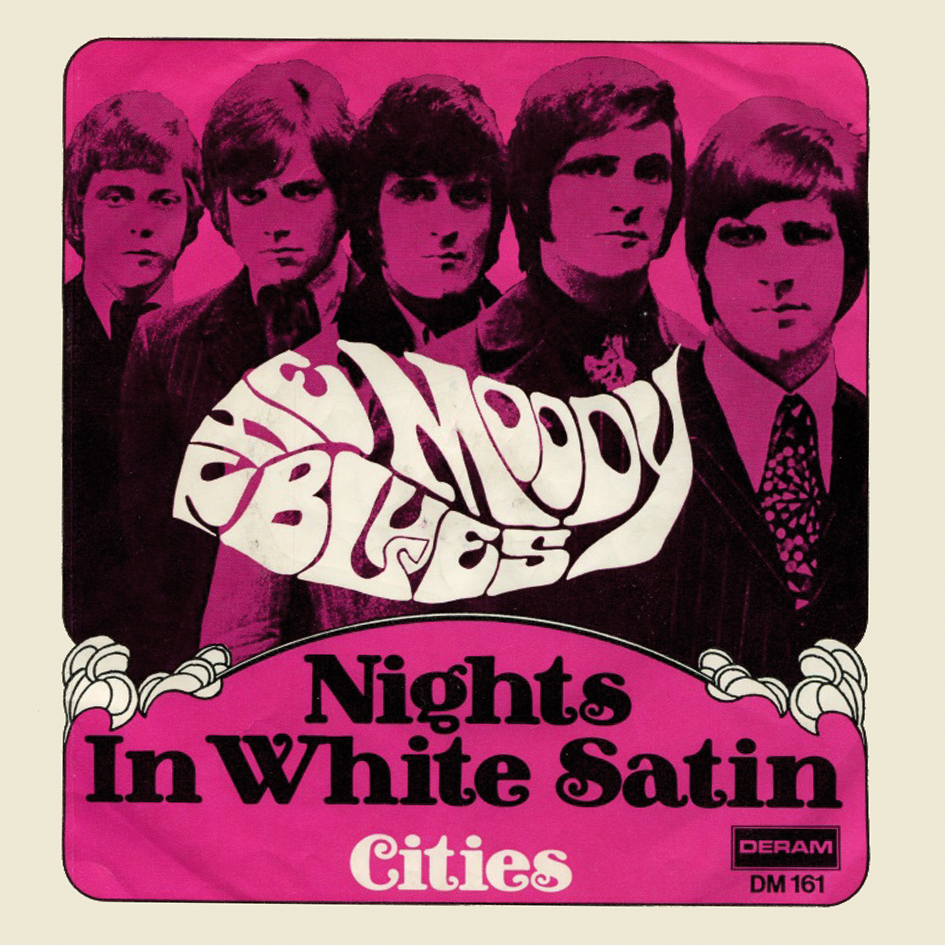 | Nights in White SatinThe Moody Blues |
Writer(s): Justin Hayward (see lyrics here) Released: November 10, 1967 First Charted: February 10, 1968 Peak: 2 US, 11 CB, 11 GR, 12 HR, 37 AC, 1 CL, 9 UK, 11 CN, 8 AU, 1 DF (Click for codes to charts.) Sales (in millions): 1.0 US, -- UK Airplay/Streaming (in millions): -- radio, 108.3 video, 211.55 streaming |
Awards:Click on award for more details. |
About the Song:Things looked bleak for the Moody Blues in 1966 when Justin Hayward and John Lodge arrived. TB The group’s “Go Now” went to #1 in the UK in 1964 and they’d had nothing hit the top 20 since. They were “back to playing gigs for small change.” TB In an effort to showcase its new “enhanced stereo sound technology,” SF the group’s record label, Deram, approached the group about recording a modern version of Dvorak’s “New World Symphony.” BBC Instead, the band sold the label on a suite of newly-composed songs woven together by orchestral links TB and thematically focused on the passing of a day. BBC Although the Moodies were among the first rock bands to integrate classical, KX the so-called London Festival Orchestra, with which they supposedly recorded, never existed. It was simply the banner under which the musicians behind the Days of Future Passed album gathered. SF As the album’s centerpiece, “Nights in White Satin” “was an early example of progressive – or art – rock.” DJ Hayward got the idea for this “yearning love song” BBC after receiving a gift of white satin sheets. SF As he told the Daily Express in 2008, “It was a series of random thoughts and was quite autobiographical. It was a very emotional time as I was at the end of one big love affair and the start of another. A lot of that came out in the song.” SF The song “was drenched in what would be come the Moodys’ signature sound – the synthetic strings of the Mellotron.” BBC The song peaked at a modest #19 in December of 1967, BBC but after songs like “Hey Jude” and “Layla” broke radio’s four-minute-singles barrier, the song became a hit in the United States. SF It then re-charted in the U.K., this time hitting #9, and in 1979 went top 20 in the U.K. for a third time, this time peaking at #14. Resources:
Related Links:First posted 11/10/2011; updated 9/17/2023. |








No comments:
Post a Comment